
EXCALIBUR, known as a pioneer of Japanese pixel art, create intricate works that evoke profound storytelling through what may appear at first to be mere video game imagery. After holding their first solo exhibition, NEW GAME+, in Paris in December 2021, they have returned for the first time in nearly three years.
In April 2024, they kicked off the year with their solo exhibition, NEW VOID, in Rotterdam, followed by creating the main visuals for Paris’s Urban Art Fair (UAF) that same month, leaving an indelible impression on us with their formidable presence and undeniable talent. From December 6 to 22, they have another solo exhibition scheduled, making 2024 the "EXCALIBUR × Sato Gallery Year."
EXCALIBUR is an artist collective founded by Yoshinori Tanaka. They draw inspiration from the graphics of the golden age of 1980s Famicom (NINTENDO) games and other video games, creating works that span a wide range of expressions—from paintings and sculptures themed around Japanese myths and culture to experiential art known as Alternate Reality Games (ARG), where daily life becomes part of the game. Their art holds a powerful message about the complexities of society and social issues, allowing viewers to experience a unique boundary-crossing between reality and games, between players and audiences.
With Maiko Iwata, who is also Tanaka’s partner in life, joining as a core member, EXCALIBUR continues to pursue their activities energetically. In this interview, following Tanaka’s previous interview, we talk to Iwata about her artistic journey, her meeting with Tanaka, and the final exhibition of 2024 that rounds out the “EXCALIBUR × Sato Gallery Year.” Be sure to read this along with their 2021 interview.
Interview by Akiko Naito
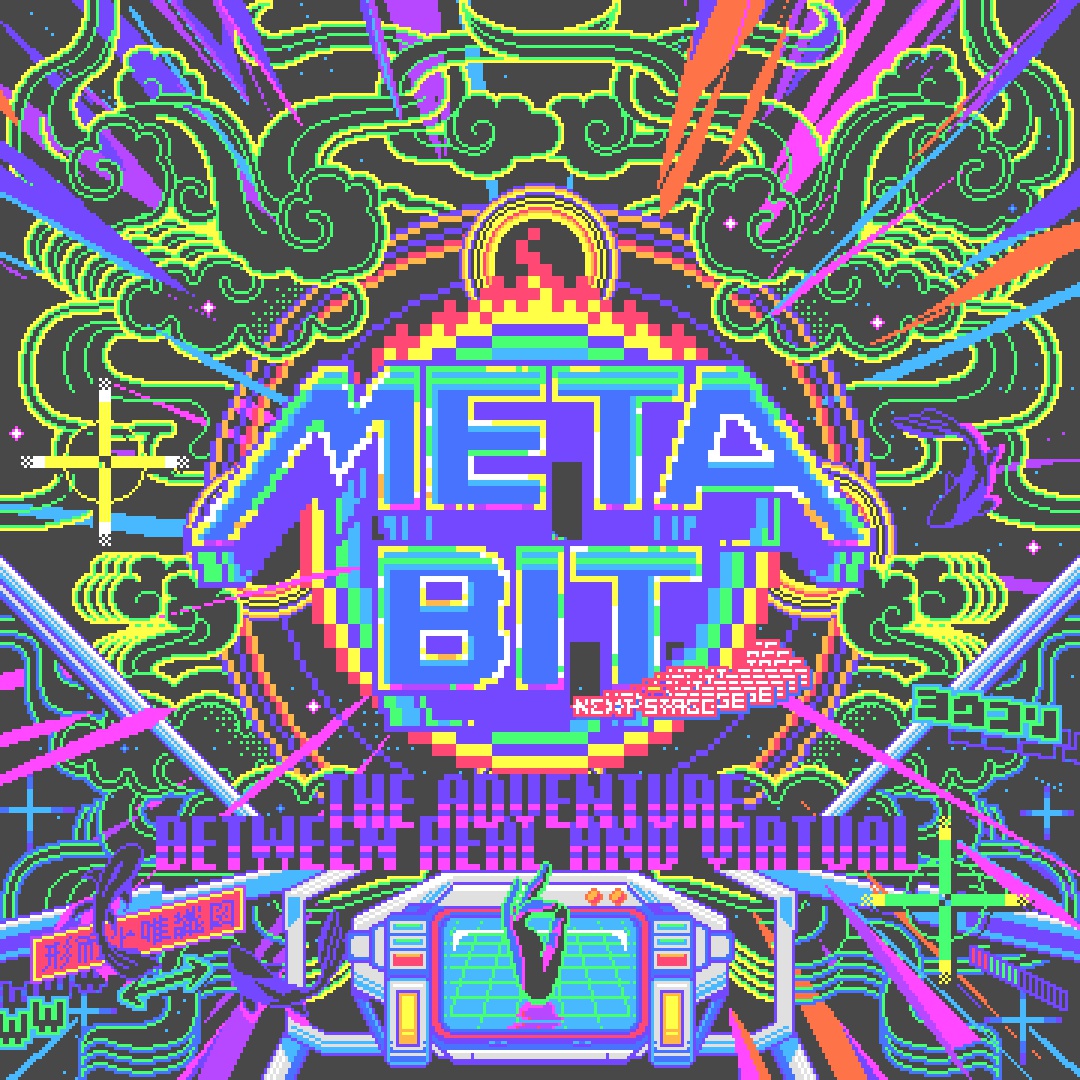
Image for the upcoming exhibition METABIT, December 6 - 22, 2024 in Paris.
Akiko: This year has been packed with events, starting with NEW VOID in Rotterdam in April, UAF, and ending with another exhibition in Paris from December 6.
Maiko: Yes, this has really been the year of Sato Gallery.
Akiko: We’ll go into the details shortly, but in the last interview, we focused on Tanaka’s background, so this time, let’s hear about you, Iwata. Tanaka is from Kyoto, and you’re from Tokyo, right?
Yoshinori: Yes, Tanaka comes from an area steeped in Kyoto’s mythology, while I grew up near the skyscrapers of Shinjuku. Plus, Tanaka’s father was involved in right-wing activities, while my family leans more liberal to leftist. Tanaka is entirely self-taught in art, whereas I grew up in an art school environment, studying design at an art university under people like Takashi Murakami. Our backgrounds, upbringings, and art histories are opposites.
Akiko: How did you two meet, then?
Noshinori: I came across Iwata in 2009 when she was doing an art project called GENSO SENTAI LEMONed, an imaginary squad.
Maiko: Actually, I started it in middle school! I was deeply moved by Lemon, a short story by Motojiro Kajii that we read in school, and began wearing a giant lemon headpiece, painting myself entirely yellow, and parading around the city. I didn’t think of it as performance art; it was just a thing my friends and I did for fun, creating a fictional story around the squad and presenting it at school festivals. But when a close friend passed away, I began presenting it consciously as an art piece.
Yoshinori: It had a tagline, 'The squad that doesn’t fight.' The paradox of a squad that didn’t fight made me reflect on the meaning of the project, and I found that intriguing.
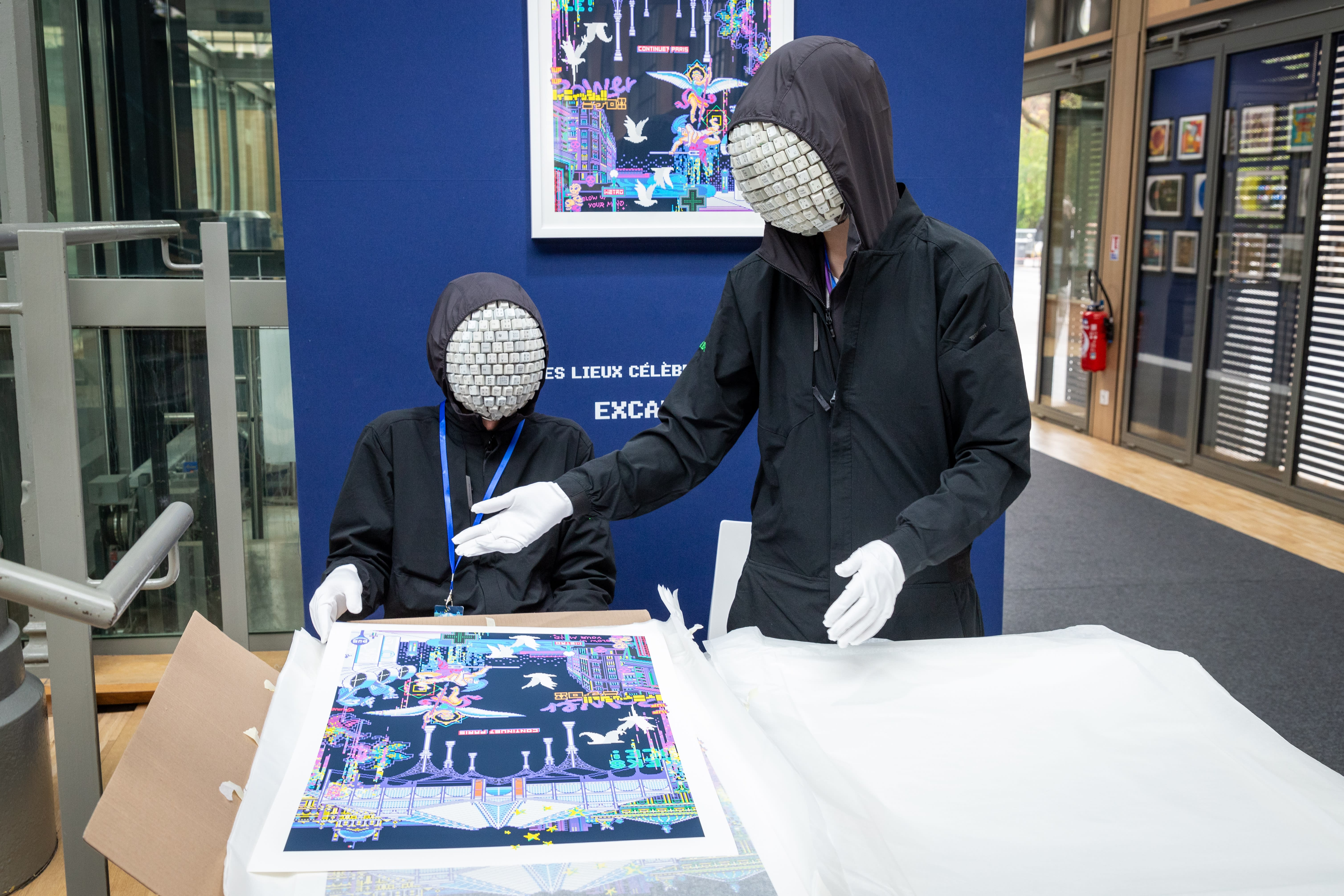
Maiko and Yoshinori at UAF 2024 ©️ Lionel Belluteau
Akiko: Did you start interacting back then?
Maiko: I had built an old Japanese house as the 'home' for the GENSO SENTAI LEMONed members and held a real-life RPG on a remote island. Tanaka was one of the visitors to these pieces. We call this method 'Alternate Reality Games' or 'gamification,' and he would be at my exhibitions from morning to night, passionately talking about the brilliance of the work and why games were necessary for contemporary art (laughs). Since then, we have been working together under different names for nearly ten years.
"The concept of EXCALIBUR is also 'to become someone’s sacred sword."
Akiko: Quite a memorable encounter! So, when did you join EXCALIBUR?
Yoshinori: Iwata joined in 2019 when we first participated in Asia Now with Sato Gallery. Her skills in painting and design surpassed mine, so I asked her to join. We created a great piece, and we decided to continue working together.
Maiko: Going back a bit, what made me trust Tanaka was a combination of his deep understanding of art and games and his entertaining insights, but the main factor was the experience on that remote island. That island was a depopulated area where people’s personalities really came out. Unlike many artists who act like the protagonist, Tanaka would voluntarily do the chores that people disliked, like cleaning the toilets and entryway, without telling anyone. He even found an old sports day video tape in an abandoned school and spent a week digitizing it for the villagers, who still watch it at their summer festivals. That made me think, ‘What an amazing person.’ The concept of EXCALIBUR is also 'to become someone’s sacred sword (EXCALIBUR).'

EXCALIBUR COMES FROM
1. FINAL FANTASY THE STRONGEST WEAPON ONE CAN GET AND A WEAPON EVERYONE CAN SHARE.
2. EXCALIBUR IS ALSO THE SWORD OF KING ARTHUR MAKING IT AN INTERNATIONAL TERM AND ONE PEOPLE FROM VARIOUS NATIONALITIES CAN RELATE TO.
Yoshinori: The name EXCALIBUR is inspired by a powerful item in RPGs. I view real life as a game, but I don’t think of myself as the main character. So, I chose this title with the hope of becoming a useful item that helps others navigate the real world.
Maiko: That experience embodied it. He is someone who can do unglamorous things for others without announcing it, which I find deeply trustworthy. It’s fascinating that someone like him is involved in contemporary art, and that’s what led us to create art projects and works together.
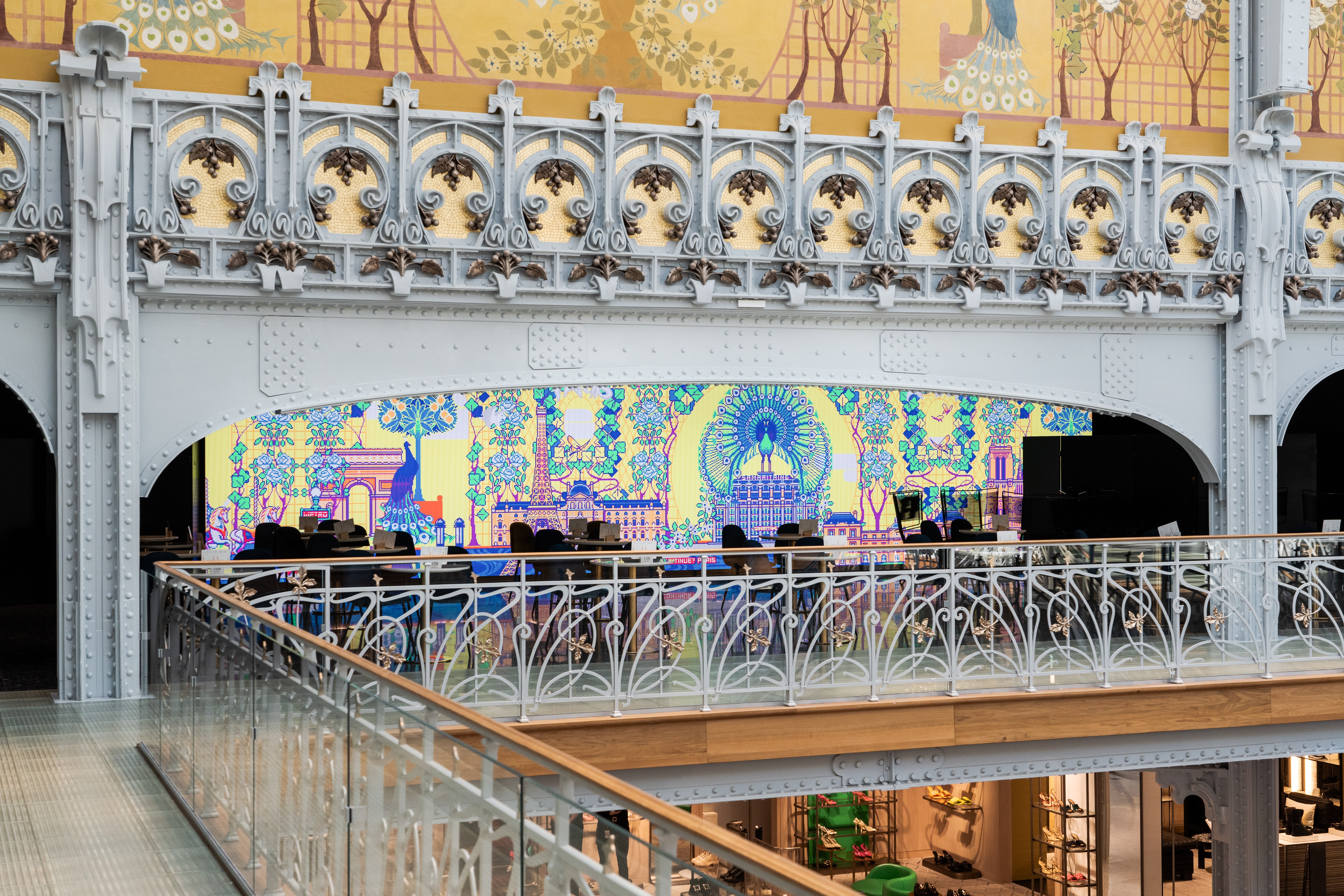
Exhibition at Le Samaritaine, 2022
Akiko: What kinds of projects have you worked on?
Yoshinori: We did a lot of game-inspired art in spaces outside of galleries, like islands, towns, shopping streets, entire buildings, and homes. We mostly focused on conceptual projects and performances.
Maiko: At Sato Gallery, they only handle easily marketable works like paintings, which is unusual in our art lives. For us, paintings are part of a space, a hint to understand the entire piece.
Yoshinori: We try to incorporate the mystery-filled methods we used in towns and islands into our paintings.
Akiko: How do you divide roles in production?
Maiko: Generally, Tanaka provides the concept, and I organize or negotiate while refining it with other members. We especially discuss whether it’s appropriate to present the work as art based on the time and place. In 2017, we held a themed exhibition wedding reception, The Truth Exhibit, around the theme of post-truth. I developed and planned it. Guests had to wear blindfolds at round tables in a dim room, and kaiseki dishes were served while they couldn’t see. Gradually, more people could remove their blindfolds, but some guests would lie, creating doubt about whom to trust. For dessert, everyone had different flavors of what seemed to be vanilla ice cream. On top of that, Tanaka and I, the bride and groom, were impersonators!
Akiko: Wait, really!?
Yoshinori: We only spoke at the beginning, and in the darkness, everyone assumed we were there. No one suspected we weren’t the real couple.
Maiko: We even took commemorative photos with the imposters, and people sent us messages afterward thanking us (laughs).

NEW VOID in Rotterdam, 2024
Akiko: That’s brilliant. There’s a surprise factor where daily life becomes art. So, what did you present at Sato Gallery?
Yoshinori: The main theme of our exhibition NEW VOID in Rotterdam was 'Vanitas.' In Western art, Vanitas includes motifs that evoke death in still-life paintings to convey the transience of life. We questioned modern perspectives on life and death through this theme.
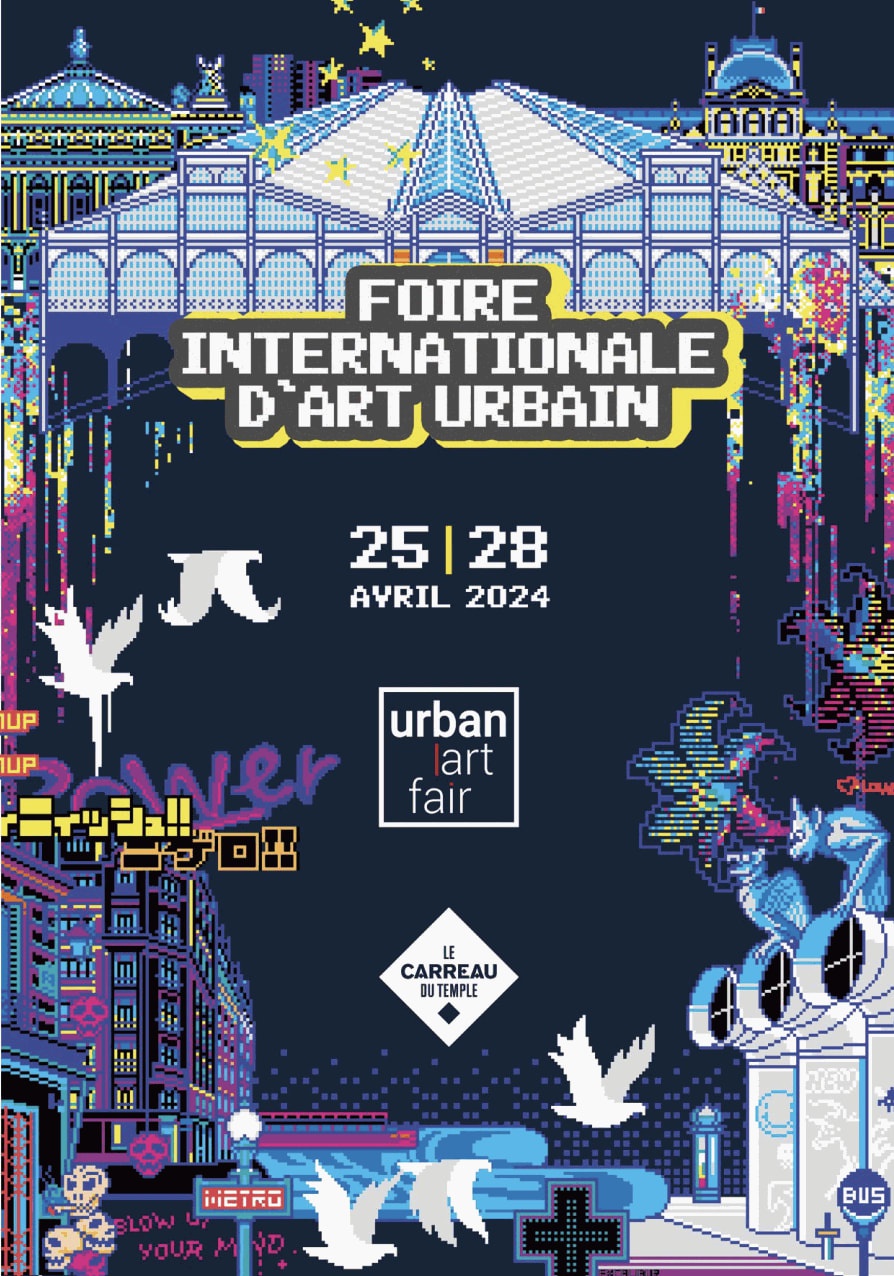
The main visual of UAF 2024
Akiko: This April, at UAF, it was your first time at a European art fair. What were your impressions?
Maiko: We were given the opportunity to handle the main visuals for UAF 2024 and created them while staying in Paris. The UAF director, Yannick, is a longtime collector of our Ukiyo.e Dot Art series, so we are deeply grateful. There aren’t many art fairs in Japan, especially those focused on urban art, so UAF was a unique event for us Japanese. It was also captivating to see this contemporary event held at Le Carreau du Temple, a traditional venue. Unlike in Japan, where art fairs are rarely family-oriented, UAF attracted people of all ages, which was wonderful.

NEW GAME + in Paris, 2021
Akiko: Tell us about the theme of the December exhibition.
Yoshinori: The exhibition will present METABIT, a theory of expression that EXCALIBUR has advocated since 2010. Using pixels—the smallest unit of an image—as material, METABIT crosses the boundary between reality and virtuality, allowing a metacognitive (meta-thinking) interpretation of information (bits) in both directions. Our last exhibition, NEW GAME+, took place as the pandemic was beginning to subside. Like the gaming system that lets you play a game anew with the stats from a completed playthrough, it was an invitation to consider how to start a new normal. Each work and exhibit is intended as a record of the present and a prophecy for the future, transforming society into a field for players and inspiring viewers to step into an adventure toward the future.
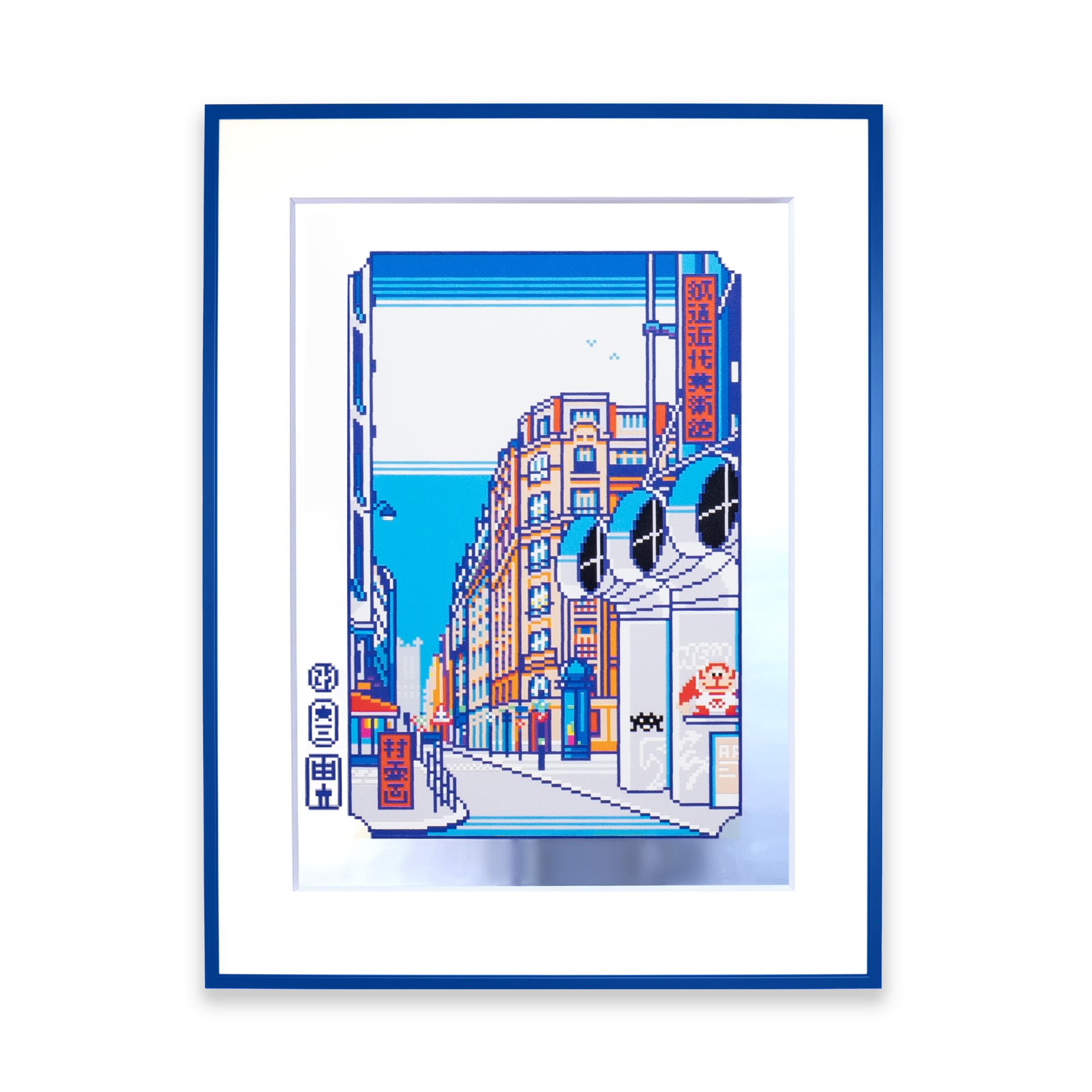
Pompidou, 2022, a Ukiyo.E from Paris.
Akiko: You’ll be staying in France for a month for this exhibition. What would you like to explore or experience?
Yoshinori: "One of our series reinterprets Tokyo through the Edo-period ukiyo-e series One Hundred Famous Views of Edo in a contemporary Ukiyo.e Dot Art style. We plan to create a Paris version. I’m excited to explore the city on foot, as there are many sights that you can’t see unless you’re actually there. Paris still retains the beauty captured by artists like Henri Rivière and Maurice Utrillo, but there’s also modern street art that only exists now. While many artists have depicted Paris through time, we want to find a vision of Paris that only we can portray in the present."
I trust in art’s power to trigger personal transformation through the insights of others.
AN: Lastly, why do you do art?
Yoshinoro: "I want to present something that could serve as a catalyst for change in the world and society."
Maiko: "I’d say I feel a strong sense of mission. I’ve learned that by taking action to cope with various feelings of loss, I can not only shift my consciousness but also inspire change in others. I’ve always felt a mission to create art because I love and can do it."
Yoshinori: "Art is something recorded alongside people and society’s history. It’d be wonderful if, in 10, 20, or even 500 years, future generations could glean something from it."
Maiko: "For me, it’s less about history and more about gaining insights through objective perspectives. I trust in art’s power to trigger personal transformation through the insights of others."
Yoshinori: "True. It’s a medium that requires viewers to be more active in their engagement than direct words."
Maik: "So, we both trust in art’s power (laughs)."

A collection of Ukiyo.E in Rotterdam , 2024
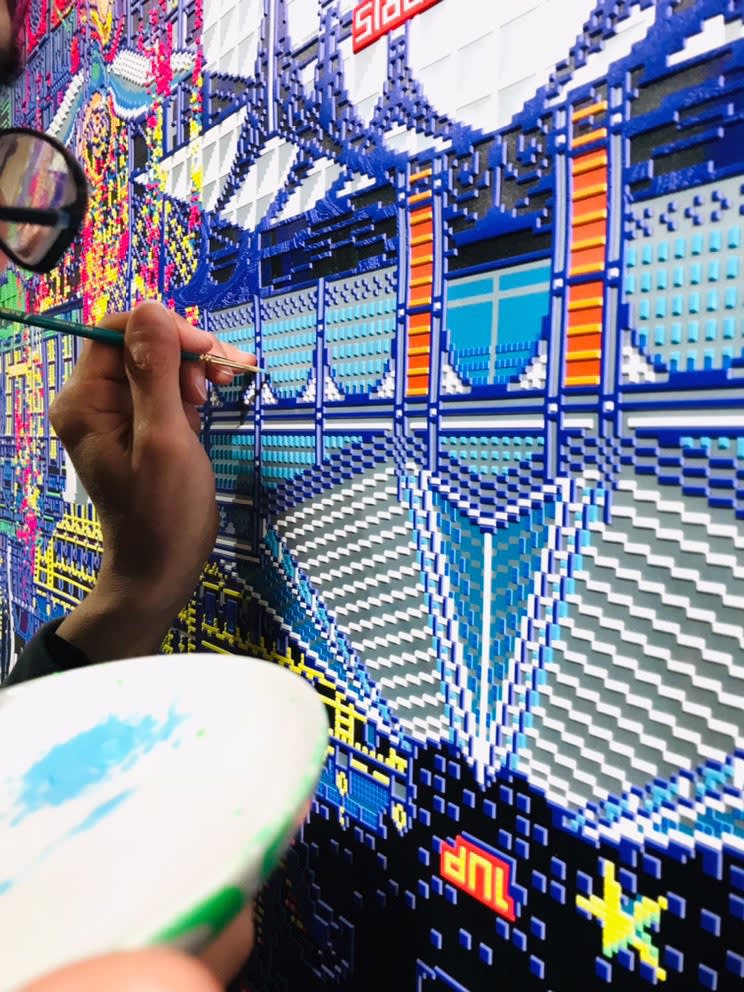
EXCALIBUR at work
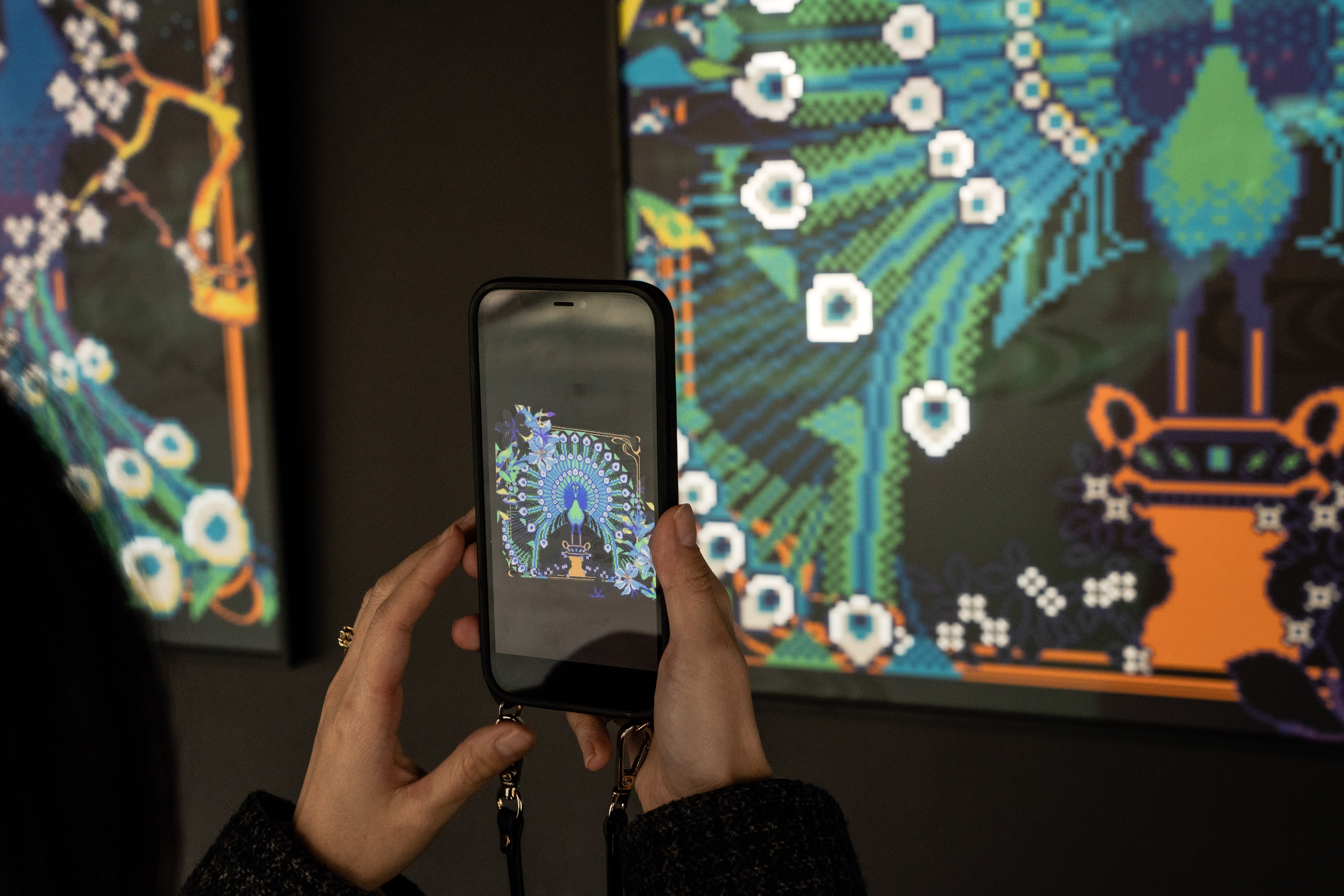 AR at Le Samaritaine Paris, 2022
AR at Le Samaritaine Paris, 2022

UAF 2024 ©️ Lionel Belluteau

Visual for Le Samaritaine 2022

